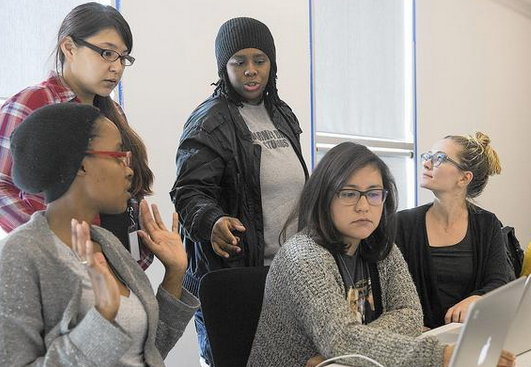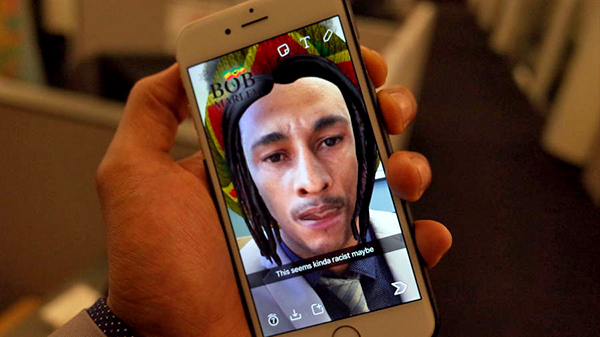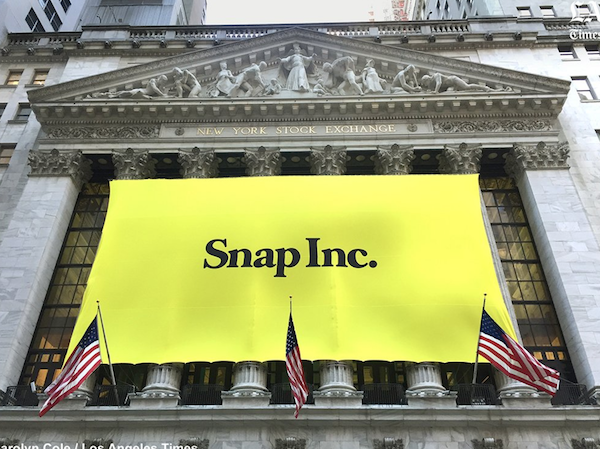Snapchat: From an idea at Stanford to Southern California’s biggest-ever IPO
Conceived six years ago by Stanford University fraternity brothers as a silly online service to send photos that would disappear without saving, Snapchat has become a force in technology, advertising and entertainment. Here’s a look at how. Snap, the Los Angeles-based firm behind the app, joined the New York Stock Exchange March 2 after a record initial public offering of its stock.
A contested foundation

In a lawsuit that ended with a $158-million settlement, Reggie Brown alleged he told Evan Spiegel about an idea for a photo-messaging website where the recipient could only view the image for a brief period.
The two Kimball Hall dormmates at Stanford University brought in recent graduate Bobby Murphy as a third partner. Spiegel had met Murphy as a freshman in 2009 and previously worked on several failed ideas, including a service for high school students applying to college.
With the photo service, which became an app called Picaboo, Brown is said to have handled marketing, including the creation of the company’s now-iconic logo of a ghost on a yellow background. Spiegel led the company, and Murphy handled app development.
Spiegel presented the idea to product design classmates in April.
Picaboo launches
Spiegel, Murphy and Brown unveiled Picaboo, a service for sending photos that disappear after 10 seconds of viewing, on the Apple App Store. They initially described the app as a game, with the user “captainhandsome” offering a crude definition of the app on the online slang demystifier Urban Dictionary. It was a game, perhaps, in that users received a point for every message sent and everyone could see the three people whom a person messaged the most.
Spiegel is fond of quoting design and furniture vanguards Charles and Ray Eames: “Toys are not really as innocent as they look. Toys and games are preludes to serious ideas.”
They worked at Spiegel’s father’s house in Pacific Palisades throughout the summer with four big monitors, a pool and plenty of free food. At the end of the summer, Brown was booted from the company for unknown reasons, according to his lawsuit.
Snapchat arrives
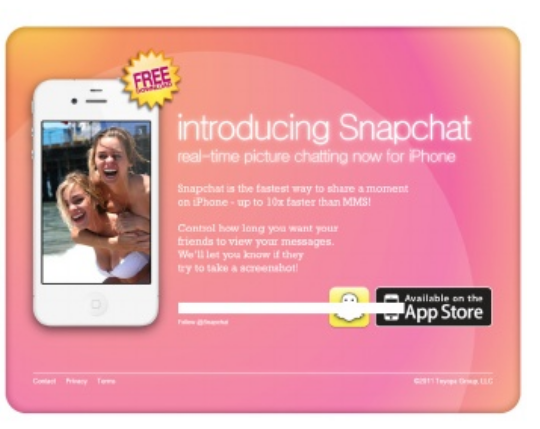
Spiegel and Murphy relaunched under the Snapchat brand because another company held the Picaboo name.
Months later, Spiegel described his goals for Snapchat. He wanted to help people capture their natural selves and share the full spectrum of their emotions.
“We wanted a place to share awkward selfies and funny photos with our friends,” he wrote on the company’s blog. “And after hearing hilarious stories about emergency detagging of Facebook photos before job interviews and photoshopping blemishes out of candid shots before they hit the Internet (because your world would crumble if anyone found out you had a pimple on the 38th day of 9th grade), there had to be a better solution.”
Of course, sending nude and risque selfies were part of the fun too. The app’s marketing materials featured two young blonde women in provocative positions. Spiegel also mentioned to an interviewer how he felt Snapchat was headed in the right direction after Rep. Anthony Weiner (D-N.Y.) resigned, prompted by revelations that he sent lewd messages to women on Facebook and Twitter.
Spiegel told TechCrunch that sexting remained only a corner of the experience.
“I’m not convinced that the whole sexting thing is as big as the media makes it out to be,” he said. “I just don’t know people who do that. It doesn’t seem that fun when you can have real sex.”
Snapchat attracts venture capital
Snapchat quickly spread through high schools across the nation in just a few months as a digital alternative to secret note passing, and investors were noticing the app on their children’s phones.
Lightspeed Venture Partners’ Jeremy Liew and Barry Eggers were the first to strike. Spiegel, spending classes watching his app’s usage grow, knew he needed more money to pay for computing infrastructure to keep up with demand. He took about $485,000 from Lightspeed.
50 million photos sent a day. Now onto video.
By now, 50 million photos were being shared on Snapchat each day by millions of users. Facebook launched a potential competitor, Poke. Investors were pouring millions of dollars into the company. And hackers were trying to find ways, beyond taking screenshots, to prove messages on Snapchat didn’t actually self-destruct.
The company introduced video messaging at the end of the year.
Spiegel continued to bat away questions from parents, law enforcement and media critics that Snapchat encourages risque behavior.
“It doesn’t actually make sense for sexting,” Spiegel told New York Magazine. “Because you see the photo for, what, three seconds?”
He also told the New York Times, “It’s not our job to police the world or Snapchat of jerks.”
Spiegel drops out of Stanford and Snapchat heads for the beach
Spiegel left Stanford, three classes shy of graduating after the spring 2012 semester. He walked during graduation ceremonies, but never received his bachelor’s degree in product design. Murphy, who had been working at digital cash register start-up Revel Systems, quit to work on Snapchat full time.
Snapchat set up headquarters at a house on the Venice boardwalk in January 2013. The team opted for Los Angeles over San Francisco’s Marina district because they liked the region’s creative spirit, laid-back culture and entertainment ties.
Is Snapchat poised to be L.A.’s tech start-up star?
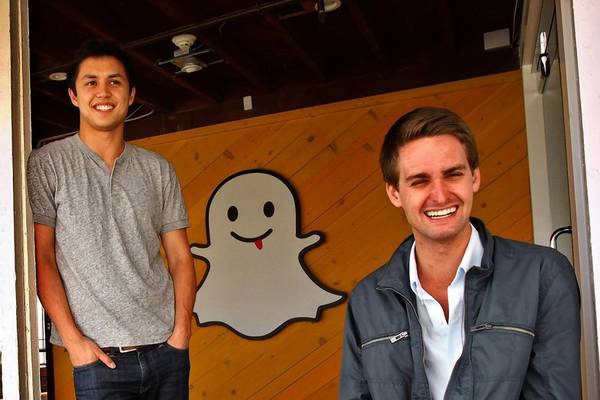
From the Los Angeles Times archives: With more than 150 million photos shared through the app every day, Snapchat has garnered enormous popularity and publicity: Mark Zuckerberg has used the app. Al Gore name-dropped it at the South by Southwest festival. Stephen Colbert had co-founders Evan Spiegel and Bobby Murphy on “The Colbert Report.”
Snap gets second major round of funding, names Michael Lynton to the board
Snapchat reportedly received $60 million, valuing the company at $800 million. Michael Lynton, then one of Sony Corp.’s top U.S. executives, joined the Snapchat board of directors after his wife decided to invest in the company. Lynton eventually became the board’s chairman.
About 200 million messages were being sent daily on Snapchat.
Snapchat introduces Stories, video blogs with short shelf lives
The company unveiled a feature enabling people to broadcast photos and videos to their followers on the app. They could tune in during a 24-hour span, and then the images would disappear.
Snapchat was up to 350 million messages sent each day.
Snapchat gets dinged by FTC
In an agreement with the Federal Trade Commission stemming from the hack, Snapchat admitted it could have done a better job of explaining its privacy terms to users and securing its data.
The order called for Snapchat’s practices to be monitored by an independent privacy expert for 20 years.
Leaked college emails taint Spiegel
The tech news website Valleywag published emails from Spiegel’s time at Stanford that used misogynistic language and described potentially illicit sexual conduct at his fraternity.
Spiegel responded: “I’m sorry I wrote them at the time and I was [a] jerk to have written them. They in no way reflect who I am today or my views towards women.”
A leader at Spiegel’s former fraternity condemned his language and described the emails as “representative of a culture that we as an organization have left behind us.”
The popular Our Stories feature debuts
Stories launched as a grass-roots look into what life was like at festivals, award shows, sporting matches, college campuses and cities near and far. Using hundreds of hours of user-generated photos and videos, a small team of Snapchat employees organized the Stories into three- to five-minute videos. Attention from Snapchat could amplify the chatter about an overlooked event as much as a highly orchestrated TV production.
Requests for coverage flooded Snapchat workers on Twitter and email, cluing them in to items the company might never have imagined: cheerleading competitions, university dance-a-thons, horse races. Each clip in a story is available for 24 hours only; then it disappears.
Geofilters launch
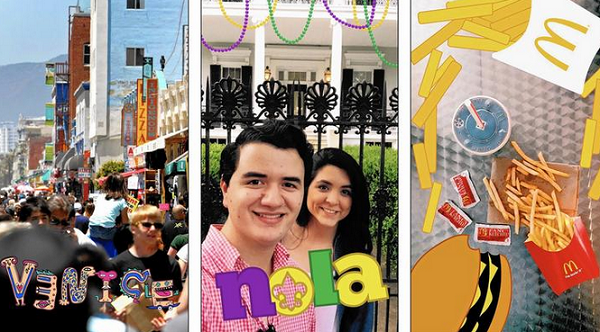
Images sent on Snapchat can be personalized in a variety of ways, including with geofilters, a special location-based overlay.
They bear the name of places along with a symbolic drawing — think beads in New Orleans, dogs at Runyon Canyon Park or skyscrapers in downtown Los Angeles. Within a year, the colorful digital stickers would go on to decorate more than 1 million posts a day.
Snapchat displays an ad in the app for the first time

Spiegel had considered disappearing coupons, promoting the debuts of musicians and various novel ad formats to start generating revenue through Snapchat. In the end, the company decided to go with a full-screen, 20-second, vertically oriented video ad as the root of its moneymaking plan.
The video was a trailer for the movie “Ouija” that ended with a terrifying shriek. Film distributor Universal Pictures said it was viewed by millions of people in a satisfying trial.
Sony leak rocks Snapchat
The business conversations of Spiegel and the Snapchat board of directors became publicly available as part of a data leak tied to the massive cyberattack on Sony Pictures Entertainment. Michael Lynton, the studio’s chairman, is a Snapchat board member.
The correspondence revealed Spiegel’s frustration with the dynamics of the tech industry, explained his desire to quickly turn Snapchat into a revenue generator and teased his efforts to expand the app beyond a place for friends to trade photos and videos of their lives into a major distributor of user-created and professionally produced content. It also revealed details about employee compensation and several previously unknown acquisitions.
Spiegel wasn’t happy. He wrote to employees: “It’s not fair that the people who try to build us up and break us down get a glimpse of who we really are. It’s not fair that people get to take away all the hard work we’ve done to surprise our community, family and friends.”
Is Snapchat’s rapid growth changing Venice’s funky vibe?
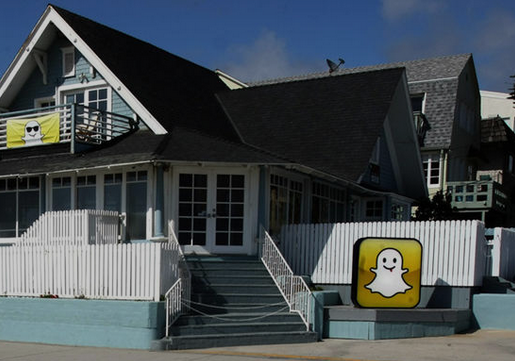
From the Los Angeles Times archives: Some residents say the tech company’s rapid expansion will alter the character of Venice, a longtime enclave for poets, artists, musicians, roller skaters, beach freaks and unclassifiable eccentrics. They gripe about a continuing influx of well-heeled techies who’ve made Venice a more expensive place to live and do business.
Snapchat’s Evan Spiegel tells USC grads to ‘voice your dissent’
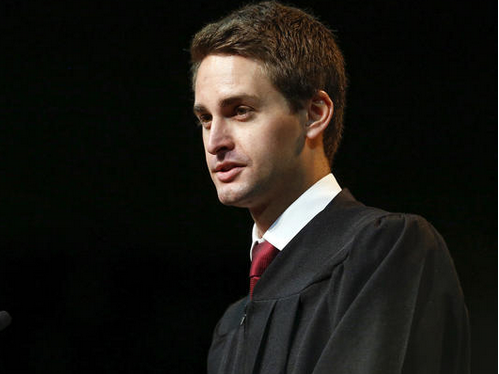
“In times of despair, you may believe the cynic who tells you that one person cannot make a difference,” Spiegel said during a commencement address. “Please voice your dissent, anticipate your erasure and please find something you aren’t willing to sell.”
Snapchat drives trend toward vertical videos
From the Los Angeles Times archives: It was a risky strategy, given the wide usage of landscape video and the disdain for portrait mode. But the calculated choice by Snapchat Chief Executive Evan Spiegel, who studied product design at Stanford University, was ultimately a wise one. Mobile users have become comfortable reading emails, scrolling through photos and watching videos without rotating their phones.
New from Snapchat: Decorate your selfies, pay for replays

Snapchat introduced its first in-app purchase, offering users three replays of otherwise self-destructing messages for $0.99. Despite demand, the company soon killed off the initiative and another one aimed at charging people for Lenses.
Lenses automatically decorated tongues, teeth and eyes by augmenting them to look silly, scary and weird. Lens options, which rotated daily, could be found by holding down on the front-facing photo capture screen. They also became a form of advertising on the app.
Why Snapchat would spend $100 million on Vurb and another $75 million on its CEO
From the Los Angeles Times archives: Spiegel has found something he likes in Lo and Vurb. And the perseverance of the last several years could be why Snapchat is placing unusually rich golden handcuffs on Lo. He’s exhibited strong self-confidence and commitment to his goals and a knack for software engineering and eye-pleasing design, according to associates.
Snapchat restructures into Snap Inc.
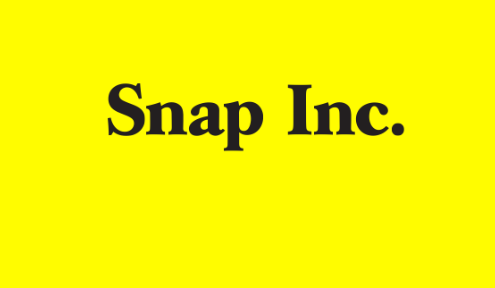
In a blog post describing the reasons for the name change to Snap, Spiegel seemed to tease the possible initial public offering.
“You can search Snapchat or Spectacles for the fun stuff and leave Snap Inc. for the Wall Street crowd,” he wrote.
Instagram and YouTube play nice with their most popular users. Why doesn’t Snapchat?
From the Los Angeles Times archives: Self-described Snapchat power user Michael Platco received a neon sign bearing his name from social media rival Instagram. And a different video app emails him every week, hoping he tries their services and brings along his 500,000 Snapchat contacts.
Naturally, he’d expect Snapchat maker Snap Inc. to call — or even just respond to his emails — to ensure it doesn’t lose his videos, sponsors and fans to a competing service. Instead, the world’s fifth most popular mobile app has warned him to follow its rules and briefly deactivated his account.
Spectacles make their debut
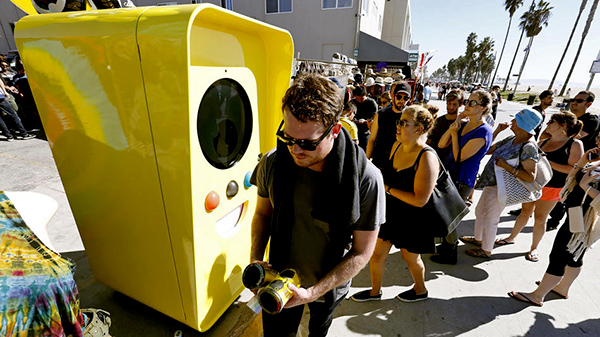
Hundreds of people lined up for hours to buy a pair of Snapchat Spectacles — available to the public for the first time and dispensed out of a bright yellow vending machine.
London tax move sidesteps concerns about Irish tax havens
Snap announced that it would collect ad revenue in London from Britain and from countries where it doesn’t have offices. The moves came after global corporations, led by tech giants Apple and Google, faced increased public scrutiny in recent years for complex schemes centered in Ireland that were aimed at lowering their taxes.
Two big Snapchat updates make the app work more like Facebook, Instagram or Twitter
Snapchat added a search bar at the top of the app. People can look up friends, media companies, celebrities and other names to get quick access to their latest posts.
Users also can submit videos and photos to the Venice company at any time for possible viewing by every user on the planet. Previously, Snapchat accepted such submissions only from certain preselected places or events such as the Golden Globe Awards or Times Square.
Snapchat maker strikes back at ex-worker who alleged fraud
Snap Inc. dismissed allegations that it lied to investors and advertisers about Snapchat usage as “false from top to bottom.” The accusations stemmed from a lawsuit filed by Anthony Pompliano, who claimed the Los Angeles company fired him in September 2015 for raising concerns internally about the alleged misrepresentations.
Why Snap calls itself a camera company
From the Los Angeles Times archives: More than signaling that Snap is the next Apple Inc. — a firm that makes software and hardware but derives about two-thirds of its revenue from iPhone sales — the distinction could be an attempt to help investors see the nuance between the goals of Snapchat and those of its most potent rival, Facebook.
Unlike Facebook, Snap’s not out to connect everyone on the planet. Rather, its goal is to tinker with both the physical make of cameras and the code behind them, giving people new ways to chat with friends, have fun together and educate themselves about the world. Both companies rely on advertising revenue, but Snap, which declined to comment, appears to be suggesting its approach will be more focused.
“They need to show they are not just Facebook for teens,” said Gene Munster, who studied Apple’s finances for years and now co-manages investment firm Loup Ventures. Tech companies that enjoy the most sustained success have visions beyond what’s visible to most today, and Snap is arranging itself to join that group.
How a concerned mother’s lawsuit helped get Snapchat to crack down on media companies
The Daily Mail, BuzzFeed, Cosmopolitan and the few other media companies allowed to post articles and videos to a highly visited section of Snapchat were asked to tone down their use of sex and violence to garner attention. Nudity censored with black strips and headlines boasting about graphic content had become so prevalent that the top stories on Snapchat’s Discover media section had been likened to clickbait.
Snap files for what’s expected to be L.A.’s biggest-ever IPO
Snapchat app maker Snap Inc. filed papers to move forward with what’s expected to be the biggest initial public offering for a Los Angeles company and one of the highest valued in U.S. history.
According to the filing, Snapchat boasts 158 million daily active users — and sources familiar with the matter say Snap’s stock sale could generate up to $4 billion, with shares priced to value the company at upward of $25 billion.
Snapchat firm makes history in stock market debut
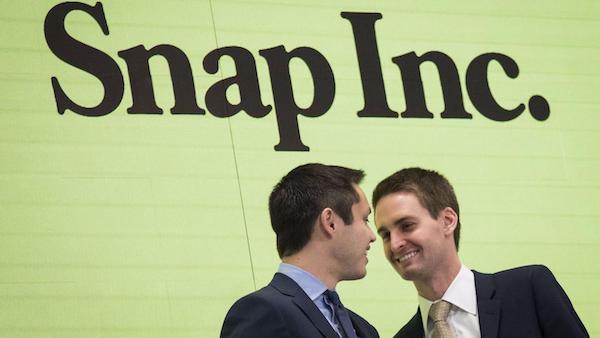
Shares hovered around $25 before closing at $24.48, valuing the company at more than $34 billion.

